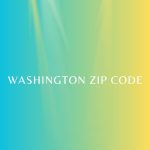Introduction
Austin, Texas, is a city that seamlessly blends a vibrant culture, thriving tech scene, and rich history. Understanding Austin’s ZIP Codes is crucial for navigating its diverse neighborhoods, each offering a unique slice of the city’s character. Whether you’re moving to Austin, looking to invest in property, or just curious about the different areas, knowing the ins and outs of Austin ZIP Codes can make all the difference.
What is a ZIP Code?
Definition and History
ZIP Codes, short for “Zone Improvement Plan” Codes, were introduced by the United States Postal Service (USPS) in 1963. They help streamline mail delivery by breaking down large geographic areas into more manageable segments. Each ZIP Code represents a specific region, aiding in efficient sorting and delivery of mail.
Purpose of ZIP Codes
Beyond mail delivery, ZIP Codes are used for various purposes, including demographic analysis, real estate, marketing, and even planning public services. They provide a way to organize and categorize regions within a city, allowing for better management and understanding of different areas.
Austin’s Geographic Layout
General Geography of Austin
Austin is located in central Texas, encompassing a mix of urban, suburban, and rural areas. The city is known for its hilly terrain, rivers, and lakes, which add to its scenic beauty and influence its neighborhood divisions.
How ZIP Codes Divide the City
Austin is divided into numerous ZIP Codes, each representing different parts of the city. These codes help identify specific neighborhoods, commercial districts, and residential areas, making it easier to navigate and understand the city’s layout.
Downtown Austin ZIP Codes
Key Areas and Attractions
Downtown Austin is the heart of the city, bustling with activity and home to many of Austin’s most iconic attractions, including the Texas State Capitol, Sixth Street, and the Austin Convention Center.
Prominent ZIP Codes
- 78701: This ZIP Code covers the central downtown area, including major landmarks and business districts. It’s a hub for nightlife, dining, and cultural events.
East Austin ZIP Codes
Cultural and Historical Significance
East Austin is known for its rich cultural history and vibrant arts scene. It’s an area that has seen significant growth and gentrification over recent years, blending old Austin charm with new developments.
Key Neighborhoods
- 78702: Covering much of East Austin, this ZIP Code includes popular neighborhoods like Holly and Govalle, known for their eclectic mix of residents, art studios, and trendy eateries.
West Austin ZIP Codes
Affluence and Residential Areas
West Austin is characterized by its affluent neighborhoods and scenic landscapes. This area is home to many of Austin’s wealthiest residents and offers a quieter, more suburban lifestyle.
Key ZIP Codes
- 78703: Encompassing neighborhoods like Tarrytown and Old West Austin, this ZIP Code is known for its upscale homes and proximity to downtown.
North Austin ZIP Codes
Tech Hub and Growth Areas
North Austin is a rapidly growing area, driven by the expansion of tech companies and new developments. It offers a mix of residential and commercial spaces, attracting young professionals and families alike.
Significant ZIP Codes
- 78758: This ZIP Code includes the Domain, a major shopping and business district, and is a key area for tech companies and startups.
South Austin ZIP Codes
Vibrant Communities and Trends
South Austin is famous for its laid-back vibe and vibrant communities. It’s a diverse area with a strong sense of local culture, featuring popular spots like South Congress Avenue.
Noteworthy ZIP Codes
- 78704: Known as “SoCo,” this ZIP Code covers South Congress and surrounding neighborhoods, offering a blend of quirky shops, restaurants, and live music venues.
Central Austin ZIP Codes
Urban Living and Key Spots
Central Austin offers a mix of urban living and historic charm. It’s a desirable area for those who want to be close to the action while enjoying a residential atmosphere.
Important ZIP Codes
- 78705: This ZIP Code includes the University of Texas campus and surrounding student housing, making it a lively and youthful area.
ZIP Codes and Real Estate
Impact on Property Values
ZIP Codes can significantly impact property values in Austin. Areas with high demand, good schools, and low crime rates tend to have higher property prices.
Popular ZIP Codes for Homebuyers
- 78746: Covering parts of Westlake, this ZIP Code is highly sought after for its excellent schools and beautiful homes.
ZIP Codes and Schools
Education Quality by ZIP Code
The quality of schools often varies by ZIP Code, with some areas being known for their top-rated public and private schools.
Top School Districts
- 78731: This ZIP Code includes parts of the Eanes Independent School District, one of the highest-ranked districts in Texas.
ZIP Codes and Businesses
Commercial Hotspots
Certain ZIP Codes in Austin are known as commercial hotspots, attracting businesses and entrepreneurs due to their strategic locations and thriving local economies.
Emerging Business Areas
- 78744: This ZIP Code in Southeast Austin is experiencing growth as more businesses move in, drawn by affordable real estate and development incentives.
ZIP Codes and Safety
Crime Rates and Safety Concerns
Safety can vary widely by ZIP Code in Austin, with some areas experiencing higher crime rates than others.
Safest ZIP Codes
- 78739: Known for its family-friendly environment and low crime rates, this ZIP Code in Southwest Austin is considered one of the safest areas in the city.
ZIP Codes and Demographics
Population Statistics
Each ZIP Code in Austin has its own unique demographic profile, reflecting the diversity of the city’s population.
Demographic Trends
- 78745: This ZIP Code in South Austin has seen significant demographic shifts, with an influx of younger residents and families moving into the area.
Conclusion
Austin’s ZIP Codes offer a fascinating glimpse into the city’s diverse and dynamic neighborhoods. From the bustling downtown core to the serene suburbs, each area has its own unique charm and character. Understanding these ZIP Codes can help you navigate the city more effectively, whether you’re looking to move, invest, or simply explore. Austin’s growth and development continue to reshape its landscape, making it an exciting place to live and visit.
FAQs
How many ZIP Codes are there in Austin? There are over 70 ZIP Codes in Austin, each covering different neighborhoods and areas of the city.
Which ZIP Code covers the University of Texas? The University of Texas at Austin is primarily located in the 78705 ZIP Code.
What is the most expensive ZIP Code in Austin? The 78746 ZIP Code, covering parts of Westlake, is one of the most expensive in Austin due to its high property values and desirable location.
How do I find out which ZIP Code I live in? You can find your ZIP Code by using online tools such as the USPS ZIP Code Lookup or by checking your mailing address.
Are there any upcoming changes to Austin’s ZIP Codes? As Austin continues to grow, there may be changes to existing ZIP Codes or the creation of new ones to accommodate the city’s expanding population and development.










